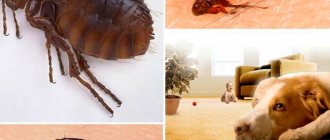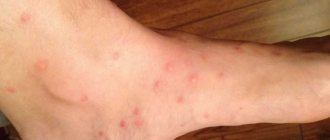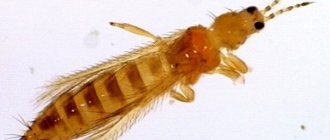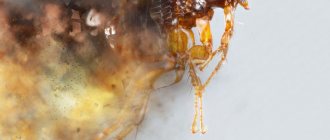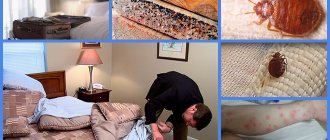To paraphrase the famous saying, we can say that the person who tamed the animal is responsible for its future fate. First of all, a small hamster is not a funny “toy”, but a living creature with its own “problems”. The animal can get sick and become infected with parasites. The owner will have to save the pet.
The health of the rodent depends on the correctness of his actions and the chosen methods of treatment. Negligent behavior can result in the death of a pet or unpleasant consequences for a person.
Can a hamster have fleas?
You need to look for an answer to the question of whether hamsters have fleas before the animal gets into the house. The decision to have a pet should be a conscious one, so you should initially become familiar with the peculiarities of keeping animals in the house and possible diseases of the rodent. Yes, hamsters have fleas!
The animal's body is covered with fur, and the skin is easily bitten by parasites. Contrary to popular belief, fleas do not live directly on the body of animals, but regularly feed there. It makes no difference to parasites whose blood they drink - cats, dogs, mice or hamsters. The most susceptible to pest attacks are fluffy Syrian, royal, and Angora hamsters. Animals of the Dzungarian and Roborovsky breeds suffer less from this scourge.
Djungarian hamster
Causes of fleas in hamsters
Other animals
Hamsters are one of the cleanest pets. Parasites cannot infect them on their own. Usually the main reason for the appearance of fleas in hamsters is that other pets who go outside “bring” parasitic insects to them.
Fleas are found on many animals. They are even called accordingly: dog, cat and rabbit. But these parasites can bite all warm-blooded animals: animals, birds, and people. The most common parasites live on cats: they almost never live on hamsters, which are a temporary transit point for them. The hamster is small enough for them, so it will be easier to breed them.
The exception is rat and mouse parasitic insects. These small creatures feel quite at ease on small hamsters, and it is more difficult to breed them.
man's shoes
Another reason your pets may have fleas is shoes. If the owner of a hamster rarely cleans, walks around the house in outdoor boots, or has a wooden floor with cracks in which there may be flea eggs, the animal is at risk. The parasite, growing into an adult, bites all warm-blooded animals and settles on furry animals.
Summer grass
In the summer, hamster owners pamper their pets with various herbal foods. It is necessary to ensure that your pet receives washed leaves and grass, as there may be parasite larvae on the surface of poorly washed plants.
With proper treatment, fleas on hamsters do not live long. The hamster itself is very small and parasites do not really like such a limited space. And those creatures that do not leave are easily destroyed.
Routes of infection
Fleas on a hamster are not a natural phenomenon. This animal is not their permanent “master”. However, under certain conditions, they can exhaust the animal for a long time.
Main sources of infection:
- Other pets and pests. Cats, dogs, as well as rats and mice bring insects into the house. Infection occurs during mating if one of the participants in the process is a temporary guest.
- Stay at the pet store. There are situations when a pet is brought into the house already infected. Initially, the symptoms are not visible, but appear over time.
- Street grass. Rodents are offered green grass that grows outside as food. The eggs and the insects themselves are found in sand, soil and thickets. Thus, the person himself brings the infection into the house.
The likelihood of infection is low if there are no other pets in the house, the pet is fed special food, and the presence of street rodents is not allowed.
Fleas - causes and consequences of appearance
Hamsters can be considered one of the cleanest pets, so the ways in which rodents become infected with parasites are through other pets that are on the street. There is simply no other reason why your ward will have harmful insects at home.
Fleas in hamsters are quite rare, but if the veterinarian has affirmatively stated that the rodent has parasites, we suggest not to panic. Fleas do not really like to stay on the body of a rodent for a long time, since the animal has a small body size. Considering that hamsters are an unusual type of animal for these parasites, they quite easily leave the rodent, and those that remain are easily removed. It is also necessary to remove insects from the animal source, otherwise the parasites may return again.
Symptoms of flea infestation
The presence of parasites can be recognized by their characteristic signs. Fleas cause discomfort and pain to a hamster. The pet's behavior and appearance changes. He becomes restless, sleeps poorly, loses his appetite, often itches and chews out fur.
Flea
Upon examination, the following is found:
- blisters and bite marks on the body;
- dried blood stains;
- sand-like grains;
- receding hairline;
- scratching.
If the owner leaves the pet without proper attention, the wounds become infected, inflammation begins, and purulent formations appear.
The danger of parasites for hamsters and humans
Severe infection leads to death in a short time. Parasites annoy with bites, drink blood, exhaust and weaken the animal. In addition, the presence of insects on the body of a pet is dangerous for the development of other serious diseases.
- Fleas are carriers of helminth eggs. At the moment when the rodent tries to remove the bloodsucker with its teeth, the worm eggs enter the hamster’s body. The first symptoms of infection may appear after 14 days.
- Open wounds and scratches become infected. Dermatitis, eczema, and abscesses appear on the body. In addition, insects spread plague, salmonellosis, and typhus.
- A flea-ridden animal loses sleep, appetite and strength. Nervous and physical exhaustion leads to death.
Insects are not that dangerous to humans. Fleas do not specifically attack people; they attack when a room is heavily infested.
What are the dangers? Is there a risk of a bite for humans?
If fleas are detected, a small rodent must be immediately helped to get rid of them, as they:
- They bite the rodent all the time;
- Causes the hamster to constantly scratch;
- Capable of causing infection: typhus, plague;
- Intense itching makes the hamster nervous;
The body's reaction to the substance injected by the flea is severe irritation.
- Due to the development of dermatitis, the rodent’s hair begins to fall out, and inflammatory processes occur on the skin;
- The parasite's saliva can cause a toxic reaction in the hamster.
Lack of necessary measures leads to dermatophiliasis. Fleas provoke the simultaneous appearance of helminths (worms). They pose a huge danger not only to animals, but also to people, since they are able to feed on human blood, leaving almost no marks on the skin.
ATTENTION: Like all their relatives, they are distinguished by their fertility. Untimely treatment of the premises (not just the cages) leads to an increase in the number of blood-sucking parasites.
Rodent treatment
After discovering parasites, it is worth asking the pressing question of how to remove fleas from a hamster. Timely treatment guarantees a quick recovery for the pet and a restful sleep for the owner.
What you should not do is bathe your hamster with flea shampoo for cats and dogs. Animals do not tolerate water treatments well and risk dying from colds. It is recommended to use special products at home or seek help from a veterinarian.
Flea drops
They are considered the most effective and most convenient to use. To fully treat your pet, you need to apply 1-3 drops of the product to the withers area, where the hamster cannot reach with his teeth. Within 2 hours, the active components are completely absorbed by the skin, localized in the hair follicles and the upper layer of the epidermis. The poison enters the body of insects during bites.
The effect of the drug lasts from 1 to 3 months. Drops are used to treat and prevent re-infection.
Drops
For the treatment of rodents, it is recommended to choose safe agents whose active components do not enter the systemic bloodstream. These include, for example, drops for treating cats Frontline . This brand also produces a product for dogs, but the dosage is higher, so it is not suitable in this case. If your hamster has fleas and you don’t know what to do, buy drops for cats and use them once.
Injections
This treatment method is suitable for severely infected pets and a high probability of re-infection. The veterinarian knows very well how to remove fleas from a hamster with an injection, so there is no shame in using his services.
The drug used can cause serious side effects, including death, so the rodent should be supervised at first. Typically 1% Ivermectin twice at 15 day intervals.
Insecticidal powder
The product in powder form is applied to the animal’s body and thoroughly rubbed into the skin. The active components begin to act immediately. Insecticides paralyze insects on contact, after which they die. The effect lasts for about 2 weeks. If necessary, repeat the treatment. To treat domestic hamsters, veterinarians prescribe Insectal, Celandine .
Anti-parasite sprays
The drug is available ready-made in a special spray bottle. To remove fleas from a hamster, it is enough to treat the animal’s fur once. The sprayer is kept at a distance of 5 cm from the surface to be treated. The product dries quickly, but it is advisable to ensure that your pet does not lick the spray from the fur for 20 minutes after treatment.
It is recommended to use a special spray for rodents, Ultra Care Flea And Tick Spray For Small Animal, or a product for cats, for example, Bars .
Prevention measures
To destroy all individuals and prevent their reappearance, you should consider the following recommendations and tips:
- 90% of the entire population lives outside the hamster's cage. It is important to carefully inspect your pet's fur, bedding and other items. Having seen at least one individual, you should immediately treat the animal and its home;
- eggs and larvae are located throughout the house. Regular wet and dry cleaning will help remove adults and their offspring;
- the vacuum cleaner is washed thoroughly, and the dirt from the bag or plastic container is thrown directly into a street trash container;
- pay special attention to upholstered furniture on which a cat or dog sleeps. Apply insecticides in the form of carpet powders and sprays. The best means are Raptor, Combat and Raid;
- Regularly inspect the fur of other pets. If your cat likes to spend time outside, you should buy a flea collar. This way, the pet will not bring dangerous parasites into the house;
- You can put strong-smelling plants or fruits near the cage. They will not harm the hamster, but the flea will get “a lot of pleasure.”
Close floor gaps in a private home. In the basement you can arrange twigs of wormwood and bouquets of Dalmatian chamomile. The specific smell of these plants repels insects. An effective procedure would be general cleaning, with washing of all things. Fleas prefer to live in closets, chests of drawers, televisions, and so on.
Be sure to contact your veterinarian
Cell processing
Adult insects jump onto the animal’s body for the purpose of feeding; they rarely stay there all the time. The eggs are scattered throughout the room, and the larvae often develop in the bedding or cage of the hamster. To completely get rid of parasites, you should clean the “house” and disinfest the cage.
Clean cage
Remove food debris, clean bowls and drinking bowls. Wash toys with soap. The bedding is washed and then treated with steam. The cage is treated with an insecticidal spray. Any product will do, including Dichlorvos . They do this outdoors, and after 3 hours you can release the animal there.
Treating all pets and your home for fleas
Since the rodent's cage is in the house and flea eggs can be scattered anywhere, it is advisable to clean and treat all pets.
It is advisable to disinfest the premises in case of severe infection; in other situations, folk remedies are used.
- Sprinkle carpets with boric acid powder and vacuum after 24 hours.
- Wash the floors with water with the addition of vinegar or ammonia. For 1 liter of water, a tablespoon of the product.
- Wipe the walls with the solution at a height of 1 m above the floor level.
- Pour boric acid into the cracks.
It is necessary to treat the room, otherwise you will have to constantly fight against parasites.
Prevention of re-infection
To prevent the appearance of pests in hamsters, you must adhere to the following recommendations:
- if a cat or dog lives in the house in addition to a rodent, they should be wearing a flea collar before going for a walk;
- All pets should be bathed using anti-parasitic shampoo;
- inspect the hamster’s fur at least 2-4 times a week for the presence of fleas;
- put peppermint and wormwood leaves in a cage and distribute them throughout the apartment, which repel parasites with a pungent odor;
- maintain cleanliness in the rodent's house;
- disinfect cages, apartments and furniture using insecticidal preparations.
Hamsters are highly clean, so they are not often exposed to parasitic infestations. In most cases, they become infected with fleas from dogs or cats.
Source

